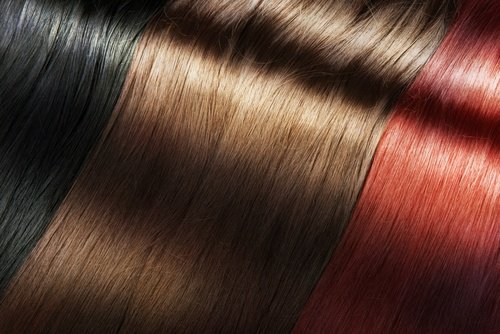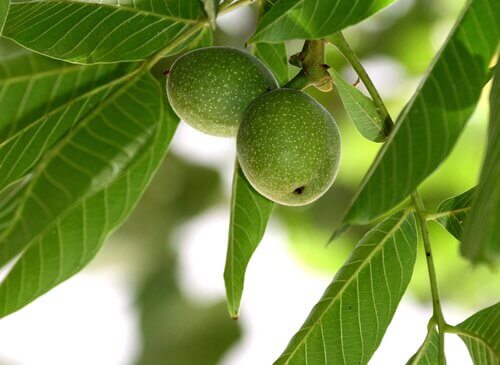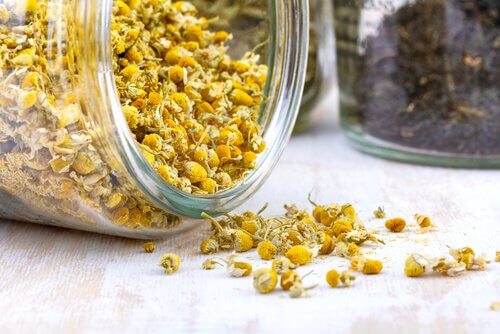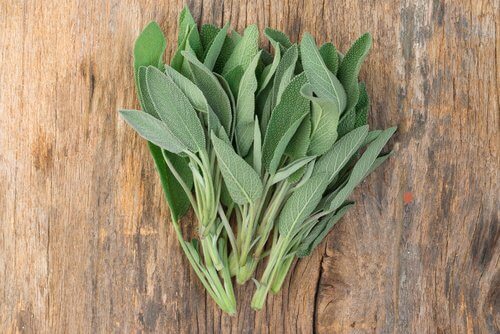How to Color Your Hair Without Using Chemicals

If you color your hair without chemicals, you must use natural ingredients; therefore,you may have to wait longer to see results. However, your hair won’t have to suffer the harmful effects of chemicals.
The use of hair dyes is one of the oldest aesthetic practices on earth.
The application of various kinds of products can give a person’s hair a rejuvenated appearance, whether it be to show off a new look or to cover up those gray hairs that reflect old age.
The problem is that the majority of products sold on the market are manufactured with aggressive chemical substances that cause negative reactions in some people.
For example, they can damage hair cuticles or cause excessive hair loss. In addition, they can even cause allergic reactions in the skin and respiratory system in more complicated cases.
What some people still don’t know is that there are 100% natural ingredients that can help you get the hair color you want without running the risk of adverse reactions.
Even if the results may take a bit longer than those from artificial products, consistently applying natural ingredients can provide a beautiful and natural tone to untamed hair.
Let’s take a detailed look at some homemade formulas that will help you achieve the hair color you want along with some additional benefits.
Are you ready to give them a try?
Natural ingredients to color your hair
Brunette hair: green walnut shell

The walnut shell contains important vitamins and nutrients that benefit capillary health while enhancing the color.
Its essential fatty acids prevent the loss of natural oils and promote shiny hair.
Ingredients
- 20 green walnut shells
- 16 oz. water
- 3 tablespoons apple cider vinegar
What should you do?
- Peel the nuts, crush the green shells and put them in a pot of boiling water.
- Let it sit for several minutes and then proceed to apply the liquid to the hair.
- Leave it in your hair for 20 minutes and then rinse.
- Add the apple cider vinegar in the final rinsing as a way of setting.
- Repeat the application three times a week in order to obtain a dark-brown tone.
Light-brown hair: onion skin and oak tree bark
The advantage of this dye for light-brown color is that the onion skin contains antioxidants that protect the hair from damage caused by free radicals.
Its consistent use promotes healthy hair growth and leaves an attractive, unique tone.
Ingredients
- ½ cup of onion skins
- 4 pieces of oak tree bark
- 32 oz. water
What should you do?
- Heat the water until it reaches a boil and add the chopped onion skins.
- Then drop in the pieces of oak tree bark and allow the mixture to cook on the stove for one hour on low heat.
- After an hour, remove it and wait until it cools to a temperature you can tolerate in your hair.
- Drain the liquid and spread it throughout your hair.
- Wait 45 minutes and rinse.
- Use it two or three times a week.
Blond hair: chamomile

Chamomile flowers are recommended for women with light-colored hair who want a blonder and shinier tone.
This plant is full of nutrients that strengthen and prevent hair loss. Plus, it’s perfect for sensitive scalps because it doesn’t provoke allergic reactions.
Ingredients
- 10 tablespoons of chamomile flowers
- 32 oz. water
What should you do?
- Put the chamomile flowers in a pot of water and heat on medium for 15 minutes.
- Once the indicated time is up, let it sit. When it reaches a tolerable temperature, apply the liquid all throughout your hair.
- Let it sit and work its magic for one hour, then rinse.
- Use it every day or a minimum of three days a week.
Read also:
Red hair: beetroot
The deep color of the beet serves as a great alternative for hair with reddish colors.
This vegetable is rich in vitamins, minerals, and antioxidant compounds that may help stop hair loss and combat excessive dryness.
Ingredients
- 1 medium-sized beet
- 32 oz. water
What should you do?
- Cut the beet into several pieces and put it in a pan with water to boil.
- Mash up the cooked beet with the water it boiled in.
- Then apply the natural dye all throughout your hair.
- Let it sit for 20 minutes and then rinse.
- Use it three times a week.
Hair with grays or whites: sage

This plant is an excellent option for avoiding and concealing gray hairs. Sage helps to nourish the scalp and contributes to a darker hair tone.
Read also:
Ingredients
- 2 tablespoons of sage
- 50 mL moonshine or liquor
- 16 oz. water
What should I do?
- Add the sage to a pot of water and let it simmer for an hour.
- Wait for it to settle, strain it through a colander, and add the liquor.
- Sprinkle the mixture throughout your hair and repeat every day.
Choose the coloration that’s most appropriate for the hair tone you’d like, and use it consistently to achieve the desired change.
Give these great natural ingredients to color your hair a try!
All cited sources were thoroughly reviewed by our team to ensure their quality, reliability, currency, and validity. The bibliography of this article was considered reliable and of academic or scientific accuracy.
- FEN. (2014). Remolacha. Verduras y Hortalizas.
- Lopresti, A. L. (2017). Salvia (Sage): A Review of its Potential Cognitive-Enhancing and Protective Effects. Drugs in R and D. https://doi.org/10.1007/s40268-016-0157-5
- Alonso Pineda, D., Salucci, M., Lázaro, R., Maiani, G., & Ferro-Luzzi, A. (1999). Capacidad antioxidante y potencial de sinergismo entre los principales constituyentes antioxidantes de algunos alimentos. Revista Cubana de Alimentación y Nutrición.
- Hernández, S. A., Lloret Aldazabal, R., & Kraser, R. B. (2019). Estudio de sustancias potencialmente peligrosas presentes en tinturas para el cabello. Aportes a la cosmética desde un enfoque CTS. In V Jornadas de Enseñanza e Investigación Educativa en el campo de las Ciencias Exactas y Naturales (Ensenada, 8 al 10 de mayo de 2019).
- Gualpa, F., & Universidad Politécnica Salesiana de Quito. (2015). QUINOA (Chenopodium quinoa), AMARANTO (Amaranthus caudatus) Y ARGININA COMO INGREDIENTES PROTECTORES EN TINTES PARA CABELLO. Recuperado 17 de abril de 2020, de https://dspace.ups.edu.ec/bitstream/123456789/7790/1/UPS-QT06414.pdf
- Villada, M. F. A., GIL, A. O., GUERRERO, G. E., & DE OLEOQUIMICA, G. R. U. P. O. (2009). Evaluación microbiológica del aceite de macadamia Integrifolia, para su potencial uso cosmético (Doctoral dissertation, Universidad Tecnológica de Pereira. Facultad de Tecnologías. Tecnología Química).
- N. (2016, abril 28). Máscara de cebolla jugo. Recrecimiento y tratamiento del cabello. Las mejores recetas. Recuperado 17 de abril de 2020, de https://naturehelps.me/es/cabello/mascara-cebolla-jugo-recrecimiento-tratamiento-del-cabello-las-mejores-recetas
- Gómez Ugarte, M., & Revista de Investigación e Información en Salud. (2015). La manzanilla y sus propiedades medicinales. Recuperado 17 de abril de 2020, de http://www.revistasbolivianas.org.bo/pdf/riis/v10n23/v10n23_a08.pdf
- Jiménez Delgado, J., Madrigal Rojas, J., & Salazar Barrantes, S. (2009). Tratamiento con Manzanilla (Matricaria chamomilla), para reducción de las ojeras. Revista Médica de la Universidad de Costa Rica Vol. 3 Núm. 1 2009.
- Luna Martínez, M. C. (2017). Proceso industrial para la elaboración de tinte para cabello en base al colorante natural de Beta bulgaria (Remolacha) (Bachelor’s thesis, Quevedo: UTEQ).
- Caicedo Rivas, Y. G. (2019). Tiempo y temperatura de deshidratación de la remolacha (Beta vulgaris) en las características físico-químicas del edulcorante (Bachelor’s thesis, Calceta: ESPAM MFL).
- JIMÉNEZ, M. C., & DE PELUQUERÍA, C. I. C. L. O. F. O. R. M. A. T. I. V. O. PREPARACIÓN DE COSMÉTICOS CAPILARES NATURALES PARA TINTAR Y RECUPERAR EL BRILLO DEL CABELLO, CON ALUMNOS/AS DE FORMACIÓN PROFESIONAL.
This text is provided for informational purposes only and does not replace consultation with a professional. If in doubt, consult your specialist.








